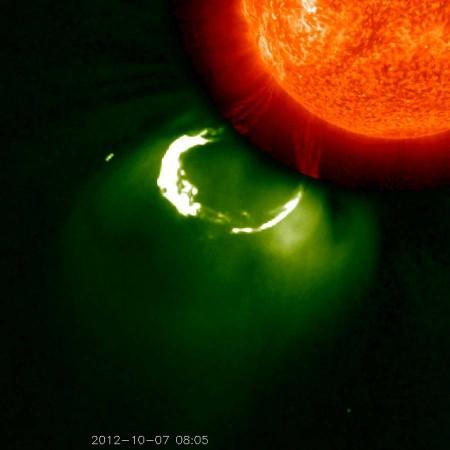
Earth is said to be prone to devastating space storms that can wipe out power throughout the world, leaving the planet in complete darkness, and we would get only a 15-minute heads-up!
ALSO READ: Do 'Vampire' vagina injections really boost orgasms in women?
The experts would be able to warn us about this disastrous phenomenon just 15 minutes before it takes place.
There are various forms of space storms, and coronal mass ejection (CME) is described as the deadliest one.
CMEs have the potential to send billions of tonnes of matter plunging through space at really high velocities, which could be more than 7 million mph.
ALSO READ: Supermoon 2017: When and where to watch; Time, Tips and Live Stream link

The Sun shooting enormous cloud of magnetised plasma into space creates CMEs, which can destroy satellites and adversely impact power supplies as well as technology.
Giant explosions taking place on the Sun's surface, called solar flares, emit particles and energy into space. CMEs are often linked to these solar flares.
"Coronal mass ejections can travel in any direction from the Sun. If they heading our way their size means they would completely engulf the Earth," Catherine Burnett, manager of the UK Met Office's space weather programme was quoted by the Mirror as saying.
ALSO READ: Astronomers discover 72 unseen galaxies in dark corner of Universe
"It takes a significant coronal mass ejection 19 hours to travel to Earth. But once we have seen a coronal mass ejection leave the Sun, we still will not know until 15 minutes before it reaches Earth what its magnetic orientation is and if we will see any impact," Burnett explained.
"We don't get a very large forecast window to know there is something on the way," she said.
Earth has not been affected by any huge solar storm since the mid-19th century. It takes around a century or two for major space storms to recur, but they can take place anytime.
ALSO READ: Boob-shaped UFO spotted by Australian man while using Google Street View
The stunning astronomical phenomenon – Aurora Borealis or Northern Lights – is an outcome of some of these storms.
Stronger storms can adversely affect navigation systems and power grids throughout the world.
These storms have the ability to affect even planes and military radio systems, and spacecraft operations. They can also cause damage in power systems and even trigger voltage alarms, a report by the Sun revealed.











